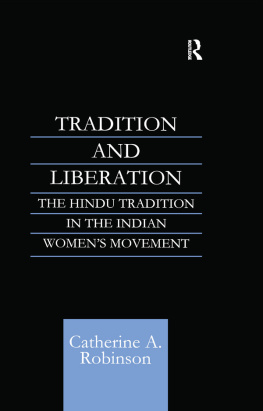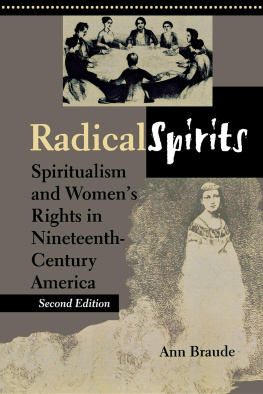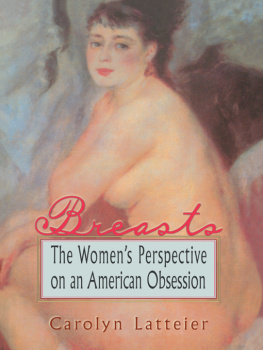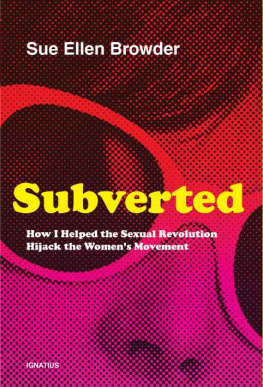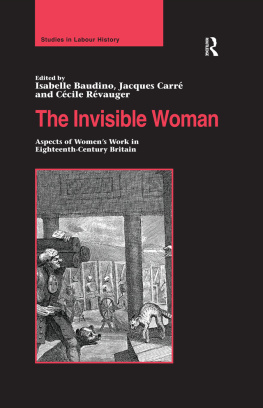THE WOMENS MOVEMENT AND WOMENS EMPLOYMENT IN NINETEENTH CENTURY BRITAIN
In the first half of the nineteenth century the main employment open to young women in Britain was in teaching, dressmaking, textile manufacture and domestic service. After 1850, however, young women began to enter previously all-male areas like medicine, pharmacy, librarianship, the civil service, clerical work and hairdressing, or areas previously restricted to older women like nursing, retail work and primary school teaching. This book examines the reasons for this change.
The author argues that the way femininity was defined in the first half of the century blinded employers in the new industries to the suitability of young female labour. This definition of femininity was, however, contested by certain women who argued that it not only denied women the full use of their talents but placed many of them in situations of economic insecurity. This was a particular concern of the Womens Movement in its early decades and their first response was a redefinition of femininity and the promotion of academic education for girls. The author demonstrates that as a result of these efforts, employers in the areas targeted began to see the advantages of employing young women, and young women were persuaded that working outside the home would not endanger their femininity.
Ellen Jordans treatment of the expansion of middle class womens work is perhaps the most comprehensive available and is a valuable complement to existing works on the social and economic history of women. She also offers new perspectives on the Womens Movement, womens education, labour history and the history of feminism.
Ellen Jordan is based at the University of Newcastle, Australia. Her research is centred upon the history of womens work and gender in early childhood. She has published widely in these areas and edits the Journal of Interdisciplinary Gender Studies.
ROUTLEDGE RESEARCH IN GENDER AND HISTORY
1 THE WOMENS MOVEMENT AND WOMENS EMPLOYMENT IN NINETEENTH CENTURY BRITAIN
Ellen Jordan
First published 1999
by Routledge
11 New Fetter Lane, London EC4P 4EE
Simultaneously published in the USA and Canada
by Routledge
29 West 35th Street, New York, NY 10001
Routledge is an imprint of the Taylor & Francis Group
This edition published in the Taylor & Francis e-Library, 2001.
1999 Ellen Jordan
All rights reserved. No part of this book may be reprinted or reproduced or utilised in any form or by any electronic, mechanical, or other means, now known or hereafter invented, including photocopying and recording, or in any information storage or retrieval system, without permission in writing from the publishers.
British Library Cataloguing in Publication Data
A catalogue record for this book is available from the British Library
Library of Congress Cataloguing in Publication Data
Jordan, Ellen, 1938
The womens movement and womens employment in nineteenth century Britain / Ellen Jordan.
280 pp. 15.6 x 23.4 cm.
Includes bibliographical references and index.
1. WomenemploymentGreat BritainHistory19th century. 2. FeminismGreat BritainHistory19th century. 3. WomenGreat BritainSocial conditions. I. Title.
HD6135.J667 1999
331.40941 09034dc21
98-51633
CIP
ISBN 0-415-18951-9 (Print Edition)
ISBN 0-203-02110-X Master e-book ISBN
ISBN 0-203-17338-4 (Glassbook Format)
FIGURES
All graphs, unless otherwise stated, are based on the census figures published in the following:
Parliamentary Papers 1844 vol. 27: 3144, 4851, 85269; 18523 vol. 88: ccxxiiccxxvii; 1863 vol. 53: xliilxv; 1873 vol. 71: xxxviixlviii, 65607; 1883 vol. 80: xxvii; 18934 vol. 106: xxxv; 1903 vol. 84: 186201; 1913 vol. 78: 611, 1224, 7588.
Percentage of governesses, female milliners and domestic servants in various age groups as shown in the census of 1851
Percentage of female bakers, butchers, farmers and innkeepers in various age groups as shown in the census of 1851
Percentage of women aged 1524 in industrial sectors in 1851, 1871, 1891 and 1911
Percentage of nurses and midwives in various age groups as shown in the censuses of 1851, 1871 and 1891
TABLES
All tables, unless otherwise stated, are based on the census figures published in the following:
Parliamentary Papers 1844 vol. 27: 3144, 4851, 85269; 18523 vol. 88: ccxxiiccxxvii; 1863 vol. 53: xliilxv; 1873 vol. 71: xxxviixlviii, 65607; 1883 vol. 80: xxvii; 18934 vol. 106: xxxv; 1903 vol. 84: 186201; 1913 vol. 78: 611, 1224, 7588.
Number and percentage of women aged 1524 in selected retail occupations
Percentage of women aged 1524 in occupational categories based on the censuses of 1851, 1871, 1891 and 1911
Percentage of women aged 1524 in occupations usually regarded as middle class and working class in 1851, 1871, 1891 and 1911
Number and percentage of women in selected occupations 18411911 with percentage of total number in each occupation
Number of women aged 1524 in selected occupations 18511911 with percentage of age group in each occupation
Number of women aged 1524 in selected occupations 18511911 expressed as a percentage of the total number of women in each occupation
Number of nurses and midwives aged under 35 returned by the census, 18511911
Date of baptism and fathers occupation of probationers at St Johns House, 18501858
Number of women returned as employed as hairdressers and wigmakers in the censuses from 1841 to 1911 with percentage of women in the category each year
Number of commercial clerks returned in the censuses from 1841 to 1911 together with the percentage increase in each decade, number of women clerks, and the percentage of women clerks in the total number
Numbers of male and female commercial clerks in England and Wales returned by county in the censuses of 1841 and 1871
Numbers of male and female commercial clerks in the principal towns of England and Wales as returned in the censuses of 1841 and 1871
Total numbers of clerical workers in certain occupations returned in the census of 1911 with number of women and percentage of women in the total number
PREFACE
When I was a pupil at a girls secondary school in the mid-1950s, I and my fellow students had it very firmly impressed on us by our parents, and particularly our fathers, that we were not simply being educated to be suitable wives for men like our brothers. When our schooldays were over we were to go on to train for an independent career in one of the occupations regarded as suitable for women. Several of my schoolmates, in fact, married and had children without finishing their degrees. Although this was a time when very few women re-entered the workforce after marriage, the fathers of these women exerted considerable pressure on them to gain a qualification, their standard argument being, How else will you support yourself and your children if you are widowed?
Many years later, when second-wave feminism focused attention on women and careers, I began to wonder where this set of beliefs had come from. In particular, I wondered whether convincing middle-class parents that their daughters should be trained for a career might not be one of the unrecorded achievements of the nineteenth-century Womens Movement. Further reading soon revealed that many of the occupations I grew up assuming to be immemorially feminine only became so during the second part of the nineteenth century, which raised the possibility that this, too, might be something my generation owed to the Womens Movement. These questions prompted the research and the answers recorded in this book.


